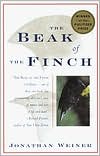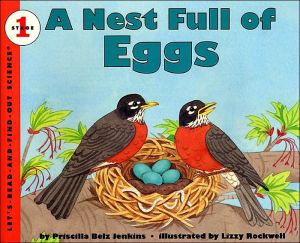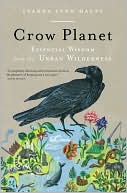Mind of the Raven: Investigations and Adventures with Wolf-Birds (P.S. Series)
Heinrich involves us in his quest to get inside the mind of the raven. But as animals can only be spied on by getting quite close, Heinrich adopts ravens, thereby becoming a "raven father," as well as observing them in their natural habitat. He studies their daily routines, and in the process, paints a vivid picture of the ravens' world. At the heart of this book are Heinrich's love and respect for these complex and engaging creatures, and through his keen observation and analysis, we become...
Search in google:
Heinrich involves us in his quest to get inside the mind of the raven. But as animals can only be spied on by getting quite close, Heinrich adopts ravens, thereby becoming a "raven father," as well as observing them in their natural habitat. He studies their daily routines, and in the process, paints a vivid picture of the ravens' world. At the heart of this book are Heinrich's love and respect for these complex and engaging creatures, and through his keen observation and analysis, we become their intimates too. Heinrich's passion for ravens has led him around the world in his research. Mind of the Raven follows an exotic journey—from New England to Germany, and from Montana to Baffin Island in the high Arctic—offering dazzling accounts of how science works in the field, filtered through the eyes of a passionate observer of nature. Each new discovery and insight into raven behavior is thrilling to read, at once lyrical and scientific. Scientific American "With ravens I'm no longer always sure of how to distinguish a simple from a more complex hypothesis, how to know whether all of the ravens' behavior is somehow complexly preprogrammed or whether they know or learn to know what they are doing" [, Heinrich writes.]
Becoming a Raven Father\ The first prerequisite for studying any animal is to get and to stay close. You must be able to observe the fine details of its behavior for long periods of time without the animal seeing or feeling your presence. That's a tall order with wild ravens in northeastern America. In my part of the country, where food is sparsely distributed, ravens may range over a hundred square miles a day, and they fly away at the mere sight of a human. Ravens are shyer and more alert, and have keener vision than any other wild animal I know, making it even more difficult to watch their natural undisturbed behavior.\ Given these difficulties, I felt I needed to try to obtain young and to be a surrogate parent to them. It was perhaps the only way to learn about many aspects of their intimate social behavior. Obtaining and living with young ravens has its inconveniences, not the least of which is making the hazardous ascents to get them from the nest. The trees that ravens like to nest in are not the ones I like to climb.\ The last few patches of winter snow were left in the shady places under fir trees. The ice had just melted off Hills Pond, and the first warblers were back. But in Maine at the end of April 1993, still a month before the maples would leaf out, that year's baby ravens would already have a coat of black feathers. I was on my way to two different nests. I would take two young of the clutch of four to six I expected to find in each nest. I would then have to attend to every need of the young birds.\ It was snowing, and the great pine tree with the first ravens' nest was swaying in the north wind coming across the lake. I wanted torun, but I held myself to a walk, trying to conserve as much energy as possible for the climb ahead. More than once before, I had been frightened when I found myself hanging on to a thick limbless pine trunk as strength ebbed from my arms. The void above the tops of the fir trees seemed to expand as my grip grew less secure.\ White feces were spattered on the ground below the nest, a sign that the young were already beyond the pinfeather stage. At this nest, which I had visited often in previous years, only the adult male scolded me; the female always left when I came near. At other nests, both members of the pair may scold, both leave, or one or both remain at some distance.\ After carefully putting on climbing spurs and adjusting my backpack, I put my arms around the tree and started. Go slowly, I kept telling myself, one step at a time. I tried to keep looking up, not down. I got very tired just as the solid limbs were getting closer. Fortunately, having trained over the winter to do chin-ups, I was able to sustain the effort. As I hauled myself up onto the first solid limbs, I felt elated. I had once again escaped the fate of some other ornithologists in similar situations. George Miksch Sutton fell from a cliff while climbing up to a raven nest, but was saved by falling on a ledge before hitting the bottom of the cliff. Fellow raven researcher Thomas Grünkorn once fell eighty feet out of the top of a beech, breaking his back in two places. Miraculously, he lived and did climb again (see Chapter 7). Gustav Kramer, an ornithologist studying wild pigeons, died when rocks came loose as he was climbing up to a cliff nest. I am quite frightened of cliffs, by comparison feeling almost safe with tree limbs to hang onto.\ The tree was swaying mightily in the gusts, but it had not been blown over in worse gales, and it would not fall or break now. Besides, there was nothing I could do about it. So no worries.\ Four fully feathered young hunkered down in a very soggy nest. It had rained steadily for the last two days, and the heavy, waterlogged nest was badly tilting because one of the supporting branches was too thin. The four young were very chunky, clumsy, and cute. When I lifted two out to put them into my knapsack, I noticed their huge bare bulging bellies. They didn't struggle or complain, and the climb back down was easy.\ With four young finally resting in the bottom of the knapsack, I hiked home to put my new charges into their new nest -- a basket packed with dead grass and leaves almost all the way to the top, so that they could defecate out over the edge. I talked to them in low soft tones, and they immediately broke their silence and answered in raspy raven baby talk. They were almost feathered out, and looked at me with bright blue eyes (which would turn gray near fledging and brown by winter). They raised pinfeathery heads and opened their big pink mouths (mouth linings and tongue turn black only after one to three or more years, depending on the birds' social status). They were begging to be fed! Such trust, especially after just being taken from their nest, is unique for a bird already at least a month old. It Is especially surprising given that ravens are innately shy of anything new. As adults, ravens in Maine are among the most shy of all birds. These young had long been exposed only to their parents and siblings, yet they responded to me unabashed. Did they somehow hear something in my voice that put them at ease?\ Their sounds tugged at my heart, and I sprang to action. We quickly established a rapport and I chopped up whatever meat I could find, usually roadkills, and fed the ravens bite-sized chunks at about hourly intervals, just as raven parents do in the wild. Baby ravens and crows need a pharmacopeia of proteins, minerals, and vitamins. I fed mine minced mice, grubs, eggs, fish, and chopped frogs...\ Mind of the Raven. Copyright © by Bernd Heinrich. Reprinted by permission of HarperCollins Publishers, Inc. All rights reserved. Available now wherever books are sold.
AcknowledgmentsPreface1Becoming a Raven Father12A Field Experiment123Ravens in the Family314Ringing Necks for Baby Food495Education646The Fate of Young Ravens737Settling in a Home Territory828To Catch and Track a Raven929Partnerships and Social Webs10710Pairs as Cooperative Teams and Sharing13111Hunting and Foraging13712Adoption14613Sensory Discrimination15514Individual Recognition16315Dangerous Neighbors18016Vocal Communication19117Prestige Among Ravens20618Ravens' Fears21619Ravens and Wolves in Yellowstone22620From Wolf-Birds to Human-Birds23621Tulugaq24522Caching, Cache-Raiding, and Deception25523Morality, Tolerance, and Cooperation26924Play by Ravens28025Deliberate Acts?29526Testing Raven Intelligence31227Brains and Brain Volume32528Are Ravens Conscious and Emotional?33229Back to the Wild343Afterword353Notes and References357Index373
\ Edward O. Wilson"An amazing book...a scientist and naturalist of the first rank...a nature writer of uncommon talent."\ \ \ \ \ David Quammen"Heinrich has a rare ability to embed dense scientific explications within graceful, lightfooted nature writing."\ \ \ Baltimore Sun"A compelling exploration of the nature of consciousness with an unremittingly delicious jaunt in the woods.... a grand storyteller."\ \ \ \ \ Los Angeles Times Book Review"Bernd Heinrich is one of the finest living examples of that strange hybrid: the science writer."\ \ \ \ \ Scientific American"With ravens I'm no longer always sure of how to distinguish a simple from a more complex hypothesis, how to know whether all of the ravens' behavior is somehow complexly preprogrammed or whether they know or learn to know what they are doing" [, Heinrich writes.]\ \ \ \ \ Library JournalYA-Heinrich's adventures with ravens are consistently interesting and illuminating, whether he's crouching for hours in cold rain to observe them, hauling animal carcasses into the woods to attract them, or visiting in the homes of their human companions. In 29 readable and richly illustrated chapters, he shares his own experiences with the birds as well as many anecdotes collected by observers from around the globe. He explores "the possibility of conscious choice" in these obviously intelligent but often baffling birds, and believes they owe much of their complexity to the fact that they have evolved in close association with dangerous carnivores-wolves and men. Looking at the common fear that ravens damage crops, Heinrich asserts they have been unjustly accused and persecuted by farmers, and he studies firsthand the relationship of ravens with Eskimo hunters. Sometimes the research just leads him from one mystery to another, but wherever his questions take him, the journey is always fascinating as the many layers of raven psychology are revealed. Perhaps best known on this continent for its "trickster" talents, the raven has been associated in Europe with divination, death, and the Norse god Odin. Heinrich's perspective, that of the scientist, is just as compelling for modern readers and does full justice to this bird's mythical reputation. A fine, entertaining book for general readers, as well as an excellent resource for those seeking meticulously gathered and documented scientific information.-Christine C. Menefee, Fairfax County Public Library, VA Copyright 1999 Cahners Business Information.\ \ \ \ \ David Quammen[Heinrich] has a rare ability to embed dense scientific explications within graceful, light-footed nature writing....Small facts seem to excite Heinrich as much as large ideas, and sometimes they glitter prettily for the reader too....The mind of Bernd Heinrich is a big, antic thing, like a raven, and meant to live outdoors.\ — The New York Times Book Review\ \ \ \ \ Scientific American"With ravens I'm no longer always sure of how to distinguish a simple from a more complex hypothesis, how to know whether all of the ravens' behavior is somehow complexly preprogrammed or whether they know or learn to know what they are doing" [, Heinrich writes.]\ \ \ \ \ Kirkus ReviewsStill wild about ravens after all these years, award-winning zoologist Heinrich (Univ. of Vermont; The Trees in My Forest, 1997, etc.) continues his investigations into the big crow's behavior. What makes ravens tick, or, if you prefer, quork? What fires their love of baubles, their delight in tomfoolery? Why have so many cultures portrayed the birds as creators and destroyers, prophets and clowns and tricksters? Are they sentient? Do they scheme? To what use do they put that sizable brain? Heinrich has shared a lot of forest time with ravens over the years, trying to gain perspective on these questions. He has come away with an admittedly incomplete if anecdotally rich picture of the bird, one that bears up the historical image of a canny creature that trumps our expectations. Here is a bird that willingly incubates eggs that are obviously not its own, the smart guy falling for the oldest parasitic trick in the book. Yet here is also a bird that can sit down at the table, to a nicely fatted calf, say, with wolves and golden eagles, animals that are known to serve raven when the calves are scarce. Heinrich freely shares the glimmerings of real understanding he has made—much the same way as ravens share food finds (in apparent, and typical, anti-evolutionary spirit)—including the exploratory/carnal fixation the raven has with bijouterie, and how many ravens it takes to fish the Yellowstone River for cutthroat. But when it comes to measuring the ravens' intelligence, Heinrich suggests it would be folly to do so in human terms: We are, in effect, culturally incomparable, and for all the seeming pleasure we take in one another's company, how the bird goes about interpretingthe world remains closed to us, enigmatic and contradictory as ever. Left unsaid in this learned study is how many hours Heinrich sat motionless in the deep-space cold of a Maine winter to gather these observations. There lies the gauge of his enterprise, understanding, and passion. (illustrations, not seen)\ \







